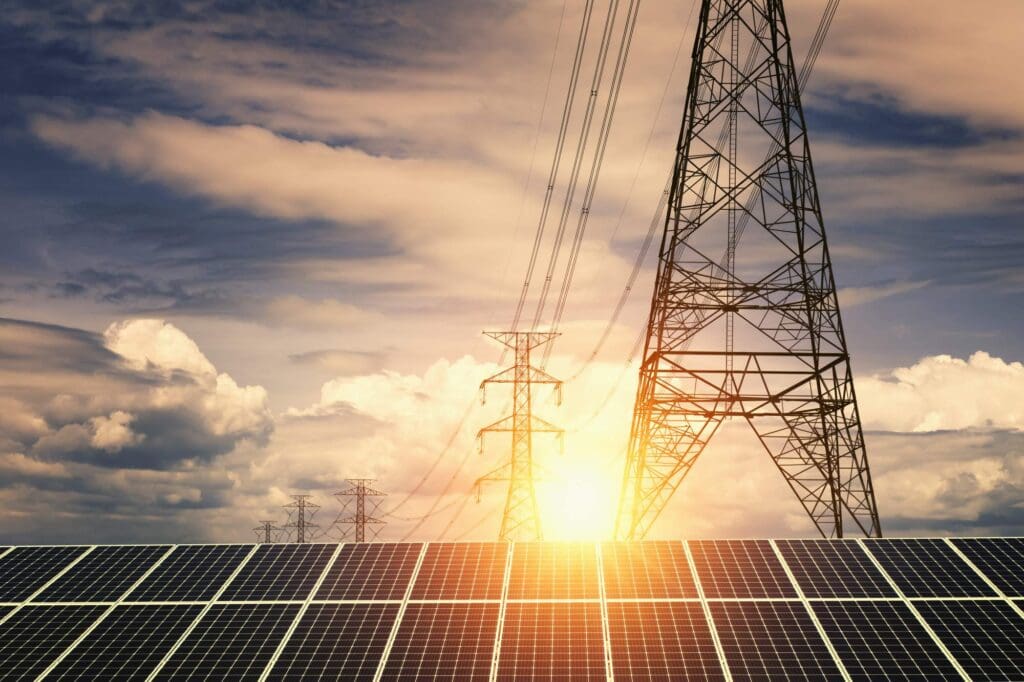Introduction
On 15 April 2025, Vietnam’s Prime Minister approved Decision No. 768/QD-TTg, adjusting the National Power Development Plan VIII (“PDP8 Adjustment“) for 2021–2030, with a vision to 2050. The PDP8 Adjustment aims to ensure sufficient electricity to support socio-economic development, targeting an average GDP growth rate of 10% annually from 2026 to 2030 and 6.5% to 7.5% from 2031 to 2050. The PDP8 Adjustment addresses electricity shortages, enhances grid reliability, and supports Vietnam’s commitment to a sustainable energy transition.
We previously issued a Legal Update summarising the key features of the Power Development Plan VIII when it was approved in May 2023. To read this Legal Update titled “Power Development Plan VIII”, please click here.
Key Features of PDP8 Adjustment
The key points of the PDP8 Adjustment include the following:
- Electricity Demand and Supply: By 2030, commercial electricity consumption is projected to reach 500.4–557.8 billion kWh, with total production and imports of 560.4–624.6 billion kWh. By 2050, these figures are expected to rise to 1,237.7–1,375.1 billion kWh and 1,360.1–1,511.1 billion kWh, respectively. Maximum capacity is estimated at 89,655–99,934 MW by 2030 and 205,732–228,570 MW by 2050.
- Renewable Energy (“RE”) Focus: RE (excluding hydropower) will account for 28–36% of electricity production by 2030. By 2030, 50% of office buildings and homes are targeted to use self-produced rooftop solar power for on-site consumption, not connected to the national grid.
- Nuclear Power Development: Ninh Thuan Nuclear Power Plants 1 & 2, with a capacity of 4,000–6,400 MW, will be operational between 2030 and 2035. By 2050, an additional 8,000 MW of nuclear power is planned to be made available to provide base-load power, with potential for further increases based on demand.
- Coal and Gas Strategy: Coal-fired projects under construction will continue until 2030, with no new plants planned thereafter. Existing plants will transition to biomass or ammonia after 20 years if this proves to be cost-effective. Gas-fired power, including liquefied natural gas (LNG), will reach 40.3 GW by 2035, stabilising at 15.7% of the energy mix by 2050.
- RE Exports and Hubs: By 2035, electricity exports of 5,000–10,000 MW are targeted, primarily to Singapore and Malaysia. Two inter-regional RE hubs will be established by 2030 in regions like the North, South Central, and South, integrating production, transmission, and equipment manufacturing.
- Grid and Infrastructure: The PDP8 Adjustment prioritises developing transmission grids, including interconnections with neighboring countries like Laos (5,000–8,000 MW imports), and enhancing grid capacity for RE integration. Concentrated solar projects must include battery storage (minimum 10% capacity for two hours).
- Energy Transition and Sustainability: The PDP8 Adjustment aligns with Vietnam’s net-zero emissions goal by 2050, emphasising RE, green hydrogen, and ammonia production, and reducing greenhouse gas emissions to 27–31 million tons by 2030.
- Investment Needs: The PDP8 Adjustment requires US$136.3 billion by 2030 for power plants and grids, and US$569.1 billion needed by 2050. Land use for energy projects is estimated at 89,9 to 93,36 hectares by 2030.
The Ministry of Industry and Trade is tasked with overseeing the implementation, and coordination with state-owned enterprises like Vietnam Electricity (EVN), Petrovietnam (PVN), and Vietnam National Coal and Mineral Industries Group (TKV) to develop emergency projects and ensure energy security.
Policy Assessments
- Alignment with Economic Growth:
- The PDP8 Adjustment supports ambitious GDP growth targets (i.e. 10% annually from 2026 to 2030, and 7.5% from 2031 to 2050) by projecting electricity demand and capacity increases: 500.4 – 557.8 billion kWh by 2030 and up to 1,375.1 billion kWh by 2050, with capacity reaching 228,570 MW by 2050. This forward-looking approach ensures that power supply keeps pace with industrial and urban expansion.
- Investments of US$136.3 billion by 2030 and up to US$569.1 billion by 2050 signal robust commitment to infrastructure development, potentially attracting private and foreign capital.
- Renewable Energy Push:
- Targeting 28 – 36% RE (excluding hydropower) by 2030 and promoting rooftop solar for 50% of buildings demonstrate a shift toward cleaner energy. The inclusion of battery storage for solar projects (i.e. 10% capacity for two hours) addresses intermittency, enhancing grid reliability.
- Establishing RE hubs and planning 5,000 – 10,000 MW exports by 2035 positions Vietnam as a RE energy leader, potentially boosting economic returns through trade with Singapore and Malaysia.
- Sustainability and Net-Zero Commitment:
- The PDP8 Adjustment aligns with Vietnam’s 2050 net-zero emissions goal, targeting a reduction to 27 – 31 million tons of greenhouse gas emissions by 2030. Phasing out coal post-2030, transitioning to biomass/ammonia, and exploring green hydrogen/ammonia production reflect a proactive approach to decarbonisation.
- Nuclear power development (i.e. 4,000 – 6,400 MW by 2030–2035, and 8,000 MW by 2050) provides a stable, low-carbon base-load option, reducing reliance on fossil fuels.
- Regional Integration: Importing 5,000 – 8,000 MW from Laos and enhancing grid interconnections strengthen energy security and regional cooperation. This diversification reduces domestic supply risks and leverages cost-effective hydropower from neighbors.
Conclusion
The PDP8 Adjustment is a strategic plan balancing Vietnam’s urgent energy demands with long-term sustainability. Its emphasis on renewables, nuclear power, and regional integration is promising, but success depends on addressing financing, regulatory, and technical obstacles. Effective implementation could establish Vietnam as a Southeast Asian energy transition leader while driving economic growth. Continuous monitoring and adaptive policymaking are crucial for mitigating risks and achieving ambitious goals or further adjustments may be needed.
If you have any queries on the above, please feel free to contact any of our team members.
Disclaimer
Rajah & Tann Asia is a network of member firms with local legal practices in Cambodia, Indonesia, Lao PDR, Malaysia, Myanmar, the Philippines, Singapore, Thailand and Vietnam. Our Asian network also includes our regional office in China as well as regional desks focused on Brunei, Japan and South Asia. Member firms are independently constituted and regulated in accordance with relevant local requirements.
The contents of this publication are owned by Rajah & Tann Asia together with each of its member firms and are subject to all relevant protection (including but not limited to copyright protection) under the laws of each of the countries where the member firm operates and, through international treaties, other countries. No part of this publication may be reproduced, licensed, sold, published, transmitted, modified, adapted, publicly displayed, broadcast (including storage in any medium by electronic means whether or not transiently for any purpose save as permitted herein) without the prior written permission of Rajah & Tann Asia or its respective member firms.
Please note also that whilst the information in this publication is correct to the best of our knowledge and belief at the time of writing, it is only intended to provide a general guide to the subject matter and should not be treated as legal advice or a substitute for specific professional advice for any particular course of action as such information may not suit your specific business and operational requirements. You should seek legal advice for your specific situation. In addition, the information in this publication does not create any relationship, whether legally binding or otherwise. Rajah & Tann Asia and its member firms do not accept, and fully disclaim, responsibility for any loss or damage which may result from accessing or relying on the information in this publication.














